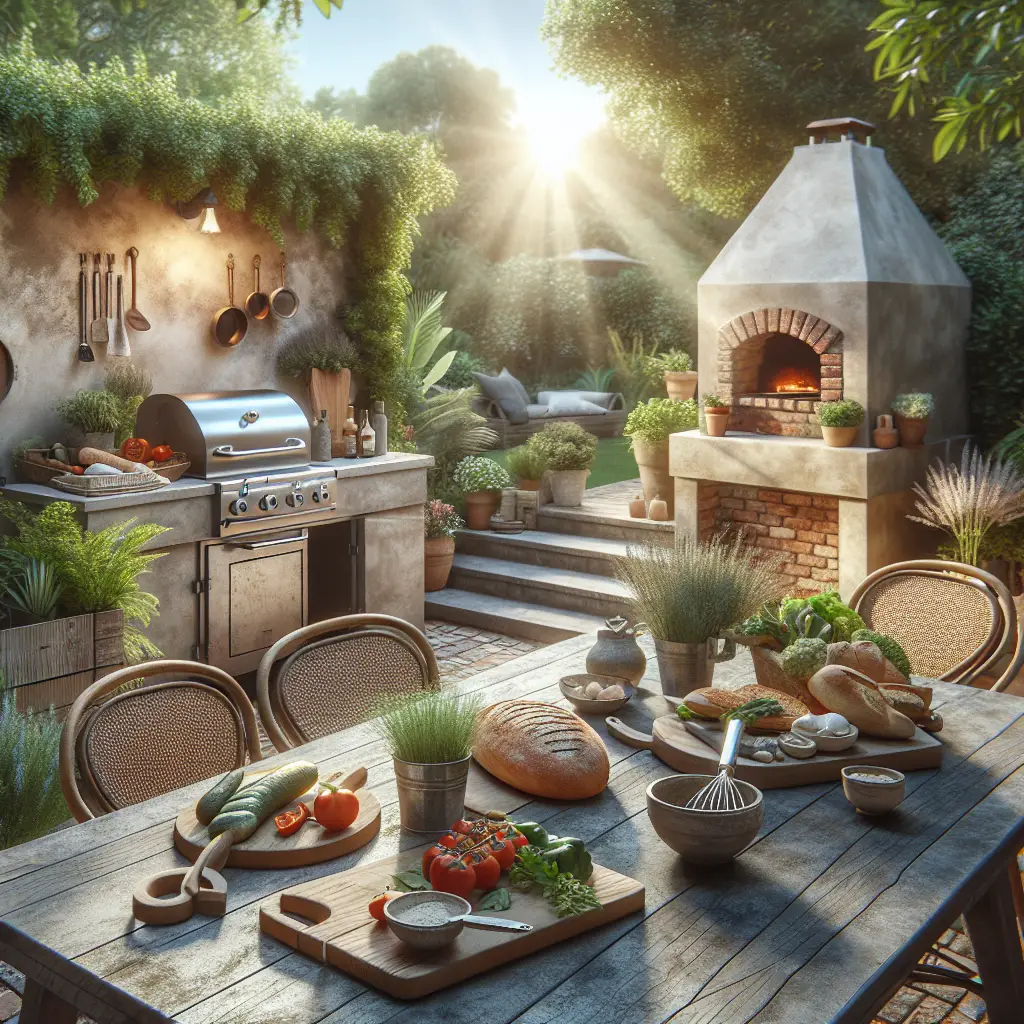Title: How to Stucco Your Outdoor Kitchen for a Durable and Stylish Finish
Are you considering giving your outdoor kitchen a facelift or building a new one from scratch? Applying stucco can provide a beautiful, durable finish that withstands the elements and complements your outdoor living space. In this comprehensive guide, we’ll walk through the steps of stuccoing an outdoor kitchen, the benefits, and tips for achieving the best results.
Why Choose Stucco for Your Outdoor Kitchen?
Stucco isn’t just a stylish choice; it’s also known for its durability and flexibility, which are essential in an outdoor setting where temperature and humidity fluctuate. This classic material can withstand severe weather conditions and is resistant to fire and pests, making it an excellent option for outdoor kitchens. If you want to explore more about stucco’s benefits, check out This Old House for a deep dive.
Materials and Tools You’ll Need
Before you start, gather the right materials and tools. You’ll need:
- Stucco mix
- Metal lath or stucco netting
- Waterproof barrier (usually building paper or felt)
- Galvanized nails or staples
- Trowel
- Mixing bucket
- Hawk board
- Level
- Mixing drill and paddle
- Float
You can purchase a quality stucco mix and other supplies from a home improvement store like Home Depot.
Step 1: Prepare the Area
You’ll need to ensure the outdoor kitchen is ready for stucco application. Clean the walls of any dirt, debris or old paint. If you’re applying stucco over a brick or concrete surface, a bonding agent might be necessary. For wood-framed constructions, attach the waterproof barrier to protect the framing from moisture, and install metal lath over the barrier to provide a surface for the stucco to adhere to.
Step 2: Mixing the Stucco
Follow the manufacturer’s instructions when mixing the stucco. It should have a consistency similar to peanut butter. Mix in small batches to prevent it from drying before application. If you’re not used to manual mixing, renting a portable cement mixer might be worth it for ease and consistency.
Step 3: Applying the Scratch Coat
The scratch coat is your base layer of stucco. Apply about a 3/8 inch thick layer over the metal lath. Use the trowel to spread the mix evenly. Once applied, use the notched side of the trowel to create horizontal ridges in the stucco. These ridges are essential as they give the next layer something to grip. Allow the scratch coat to cure for 48-72 hours.
Step 4: Adding the Brown Coat
After the scratch coat cures, apply the brown coat—this layer levels the wall. Use a straight edge or level to make sure the surface is even and flat. The thickness should match the scratch coat. Cure for another 48-72 hours, and keep it slightly moist to prevent cracking during this period.
Step 5: Finishing With the Color and Texture Coat
Lastly, apply your final color and texture coat. This is where your creativity can shine. Different textures can be achieved using various tools like a sponge, brush, or float (texturing tools). If you’re not comfortable or familiar with texturing techniques, consider watching instructional videos or consulting a professional for advice.
Seal and Maintain Your Stucco
Once the final coat is cured, usually after a week, apply a sealant to protect your stucco from moisture and stains. Regular maintenance, cleaning, and recoating of the sealant every few years will extend the life of your outdoor kitchen’s stucco finish.
Design Ideas for Your Stucco Outdoor Kitchen
Now that you’ve got the basics down, let’s talk design. Stucco is incredibly versatile. Whether you are aiming for a modern, sleek look with smooth, straight lines, or a rustic vibe with a warm, textured finish, stucco can get you there. For more inspiration, look into design ideas on platforms like Houzz.
In Conclusion:
Applying stucco to your outdoor kitchen can be a rewarding DIY project that enhances the look and value of your outdoor space. Following the steps we’ve outlined, you can achieve a professional-looking stucco finish. However, it’s critical to prepare properly and follow best practices to ensure a long-lasting, beautiful result.
Stucco might seem daunting at first, but with the right preparation and attention to detail, your outdoor kitchen can become the envy of your neighborhood. If you’d rather leave it to the pros, don’t hesitate to hire an experienced contractor who can tackle the job for you. With its durability, low maintenance, and aesthetic appeal, stucco is a fantastic choice for your outdoor kitchen space. Happy building!


